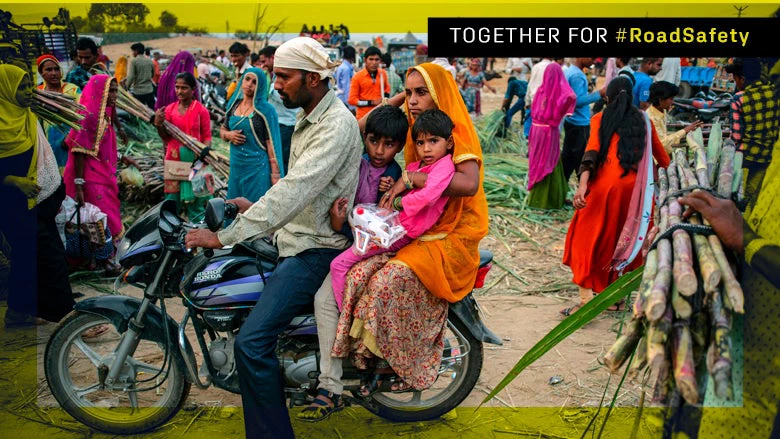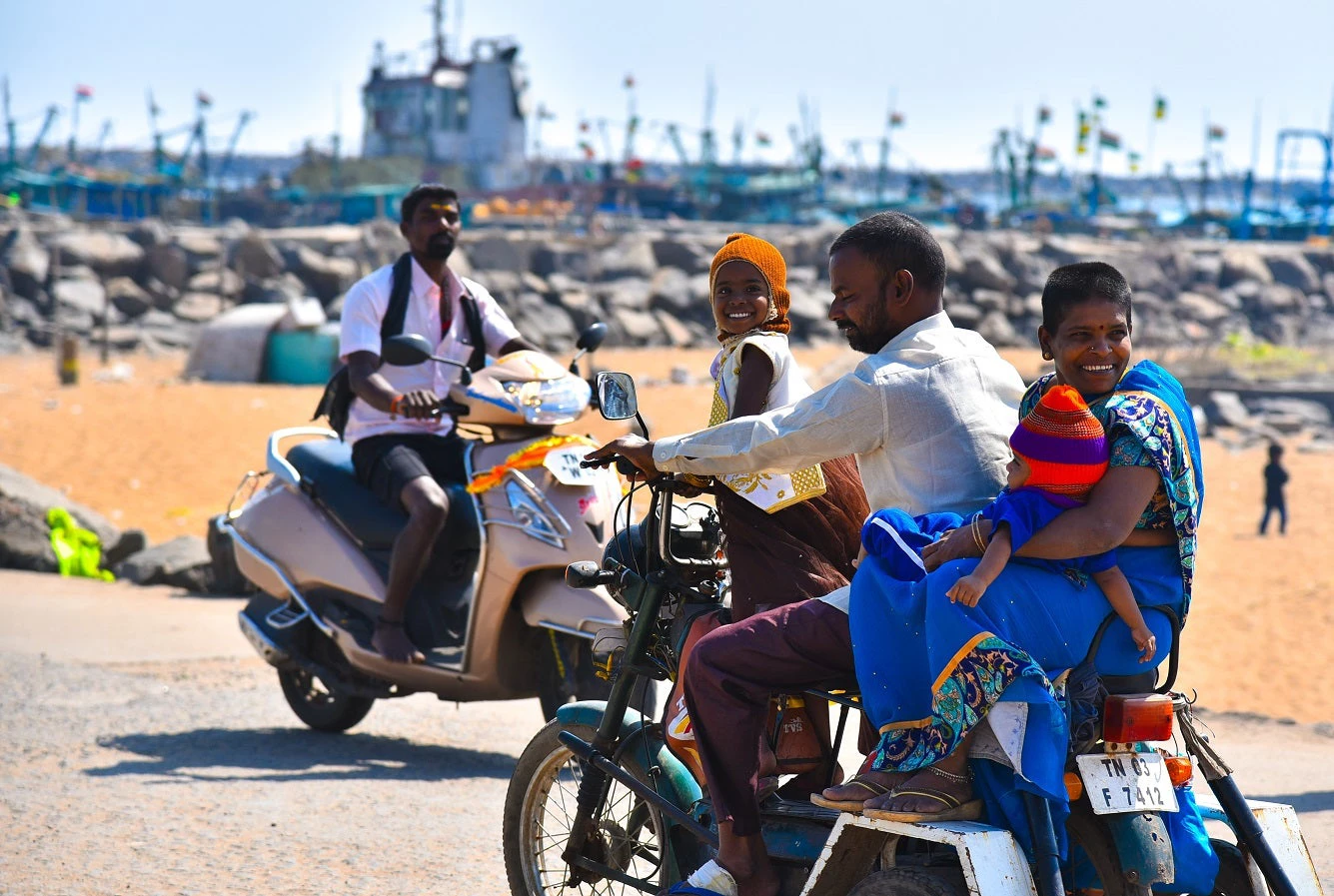 An Indian family on a motorcycle in a motley colored crowd at the sugar cane market in Pushkar. Photo Credit: Serhii Mykhalchuk / Shutterstock
An Indian family on a motorcycle in a motley colored crowd at the sugar cane market in Pushkar. Photo Credit: Serhii Mykhalchuk / Shutterstock
Road safety is a critical development priority for South Asia, impacting health, wellbeing and economic growth. Countries in the region must work together if they are to achieve the goal of halving road crash deaths by 2030. This blog is part of our Together for Road Safety campaign.
It is said that the inspiration for India’s cheapest car came when one of India’s leading car manufacturers was moved by the sheer vulnerability of a young family perched precariously on a motorbike - mother dangerously clasping the younger child to her, with the father gingerly balancing the older one between his knees as he made his way through Delhi’s chaotic traffic.
In India, two-wheelers – motorbikes and scooters - remain the first choice for upwardly mobile families and young commuters as they buy their first motorized vehicles. The e-commerce boom has added to the numbers of two-wheelers on Indian roads, and they now dominate urban delivery systems.
Two-wheelers remain popular as they are cheap, make commuting easy where public transport is insufficient or unreliable, and are simple to maneuver through dense traffic. Women enjoy the freedom they provide, as they save them from negotiating unlit sidewalks, waiting for buses, using unsafe paratransit or depending on male family members to give them a ride.
Not surprisingly, two-wheelers account for almost 70 percent of the total vehicles in cities such as Chennai, Jaipur, and Nagpur . Sales have doubled over seven years, rising from 12 million in 2011 to 21 million in 2019, and are estimated to rise even further, reaching about 27 million by 2025.
Two-wheelers are 30 times more prone to accidents than cars, and riders suffer a high rate of death and disability.
Despite the gain in accessibility two-wheelers offer, they pose a danger to themselves and to others as they weave and swerve unpredictably through traffic, take over sidewalks or park anywhere.
At the same time, given the people’s large dependence on these vehicles, the lack of well-designed supporting infrastructure that allows them to travel safely is a double whammy for users.
Two-wheelers are 30 times more prone to accidents than cars, on a per km travelled basis, and riders suffer a high rate of death and disability. In Chennai, out of 900 deaths in road crashes between 2017-2018, more than 35 percent were of two-wheeler users. Road crashes are now the leading killer of people aged 5-29 years, aggravated by lack of formal training and underage driving.
Yet, we remain far from managing or providing for them.

New road safety measures
To make India’s roads safer, the Government of India amended the Motor Vehicle Act in 2019, introducing stringent penalties for traffic violations. Further, safety features were included in vehicle design, such that now all two-wheelers are equipped with an All-Time Headlight On or Automatic Headlight On (AHO) system. For riders’ safety, all helmets sold in the country need to comply with compulsory quality control certification (BSI & ISI).
However, much more needs to be done in the areas of vehicle design, infrastructure planning, legislation and enforcement to avoid Indian cities reaching an impasse in mobility as well as safety. Measures introduced in other countries and in other parts of India can provide useful lessons for the country’s plans to enhance road safety.
Lessons from across the world
- In Taipei, as part of improved road design, advanced stop boxes have been set up for two-wheelers at road intersections.
- The Netherlands has mandated helmet use for all vehicles that can travel faster than 25 km/h
- Global NCAP recommends installing crash avoidance technologies like anti-lock brakes system and autonomous emergency braking system in future two-wheelers and motorist safety sensors in four-wheelers.
- To improve road behavior, India’s Smart Cities Mission encouraged cities to install CCTV cameras at various intersections.
- In Nagpur, India, traffic police fined more than 2,000 violators from March to May 2018. Seeing the benefit, the city administration was asked to expand the monitoring systems to automatically detect other violations, including driving without a helmet.
- A robust driving licensing and testing procedure needs to be put in place.
- The shift to electric two-wheelers will also address the air and noise pollution commonly associated with two-wheelers.
To put these approaches into action, it will be important to understand the heterogenous mix of India’s traffic and the driving behavior of two-wheelers on Indian roads. It is also important that vehicle design, infrastructure planning and policies are upgraded regularly, enforcement is unyielding and community engagements is continuous. Right now, the government is conducting a month-long road safety campaign which will also help raise community awareness.
These measures could go a long way in ensuring a safer and more enjoyable driving experience on Indian roads.



Join the Conversation